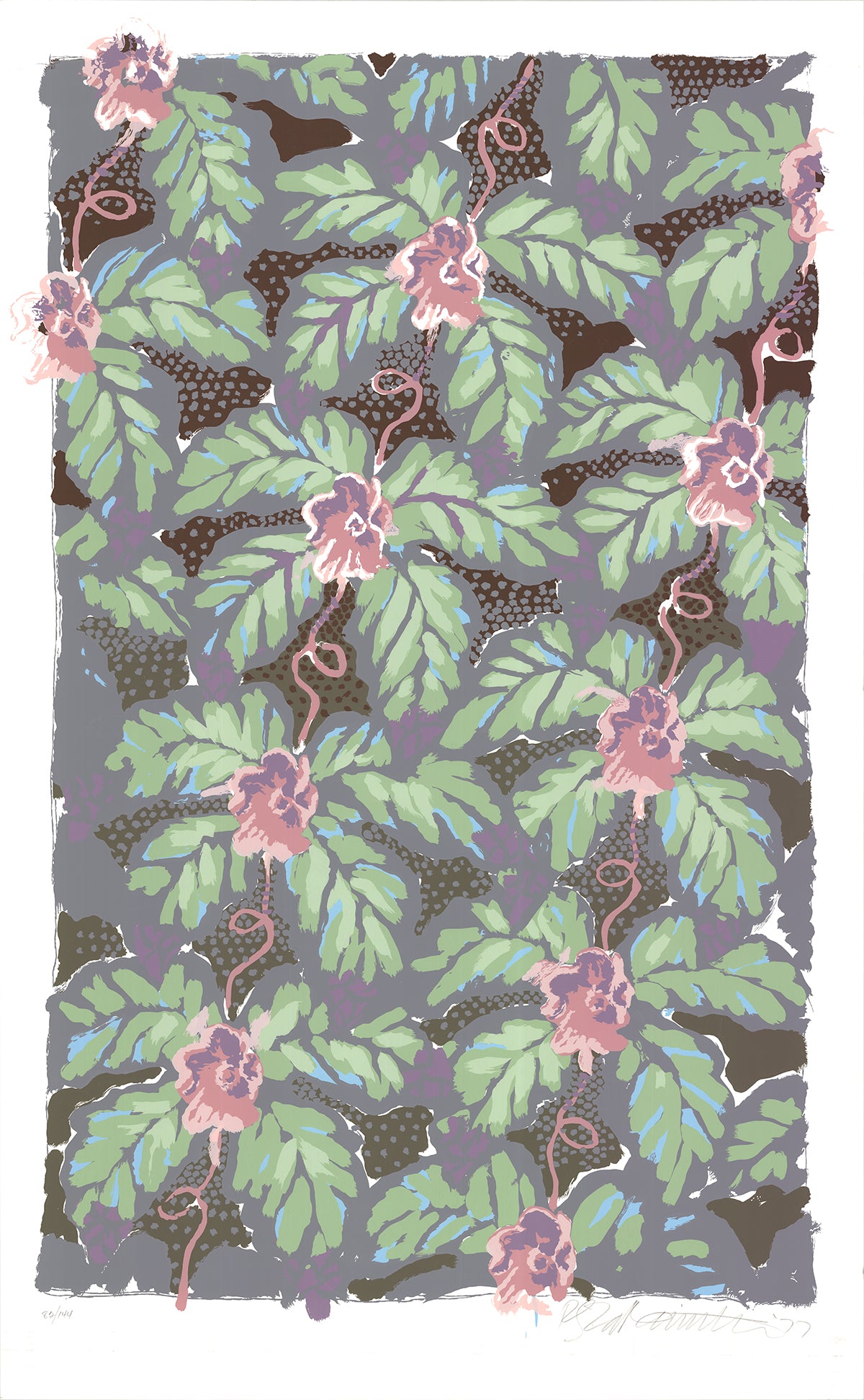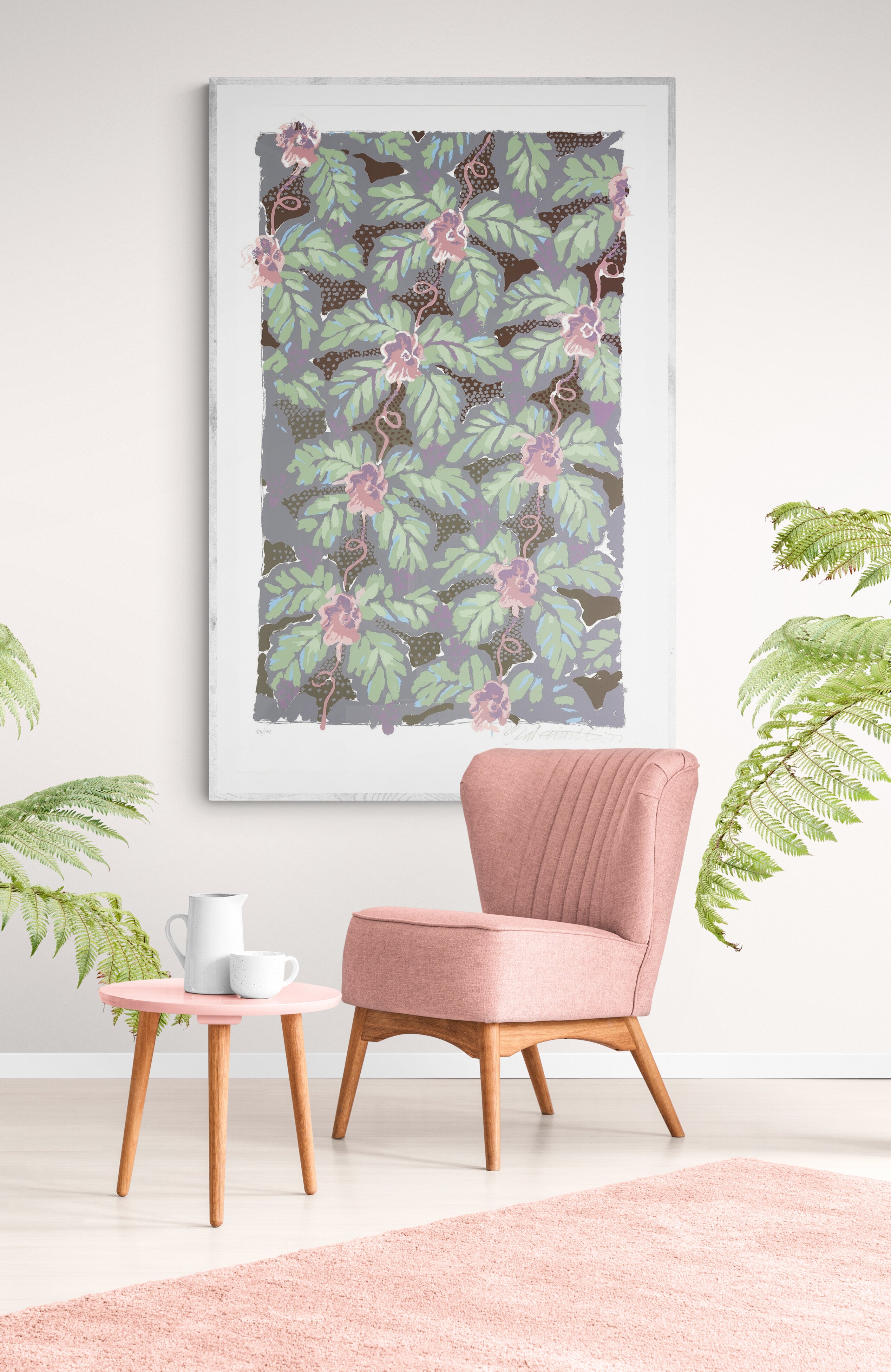Cascading Vines
Robert Zakanitch
Cascading Vines
Artist:
Robert Zakanitch
Medium: Prints
Price:
$2,400.00
Gallery:
ArtWise
Add to Favorites
Free Shipping
Details
Creation Date: 1977
Materials: Ink on Paper
Dimensions: 64" x 40" x 1"
Finish: Unframed
About the Item
"Cascading Vines" by Robert Zakanitch, Signed Serigraph printed in 1977 from an edition size of 144. The overall size of the Serigraph is 64 x 40 inches. The condition of this piece has been graded as A-: Near Mint, very light signs of handling. Here is some supplemental information about the Serigraph: Large floral image lithograph in colors that clearly depicts the pattern and decorative images that Zakanitch first brought the artist his fame. Signed and numbered out of 144. Published by the Lincoln Center for the Performing Arts in New York City in 1977.
About the Artist
Robert Zakanitch
Robert Zakanitch (b. 1935 - ) is an American painter and was one of the founders of the Pattern and Decoration movement. His work is held in the collection of the Philadelphia Museum of Art, Museum of Modern Art, Whitney Museum of American Art, among others. Zakanitch was born in Elizabeth, New Jersey and grew up in Rahway. He lived and worked in New York City. At the time of his June 3 through September 17, 2017 exhibition in the Hudson River Museum, he had recently moved his residence and studio to Yonkers, New York (as stated in the exhibition's literature). In the late 1960s he began experimenting with Color Field painting but would go on to be one of the founders of the Pattern and Decoration movement in the mid 1970s. While working in the Color Field he was strict to adhering to an abstract style inspired by Minimalism until he learned about decorative imagery. He kept the same color schemes and structures, but incorporated floral motif and a more painterly style. Zakanitch was exhibiting in New York as early as 1968. In 1975 he met Miriam Schapiro while he served as a guest instructor at the University of California, San Diego. A year later, in New York, the two artists would organize an organization around Pattern & Decoration artists. His decorative style is unique in its non-adherence to a firm grid or structure, tending more towards a freer hand and irregularity that has a charming idiosyncrasy to it, much like handmade fabric itself.
About the Gallery
ArtWise
ArtWise specializes in Modern and Contemporary Art prints by artists such as Pablo Picasso, Andy Warhol, Roy Lichtenstein, Robert Rauschenberg, David Hockney and Frank Stella among many others. In a world of digital on-demand printing, the exquisite ephemera of a still-thriving analog printing movement is alive and circulating.
Similar Artworks
Similar Artists
More from this Seller








 Facebook
Facebook
 X
X
 Email
Email
























